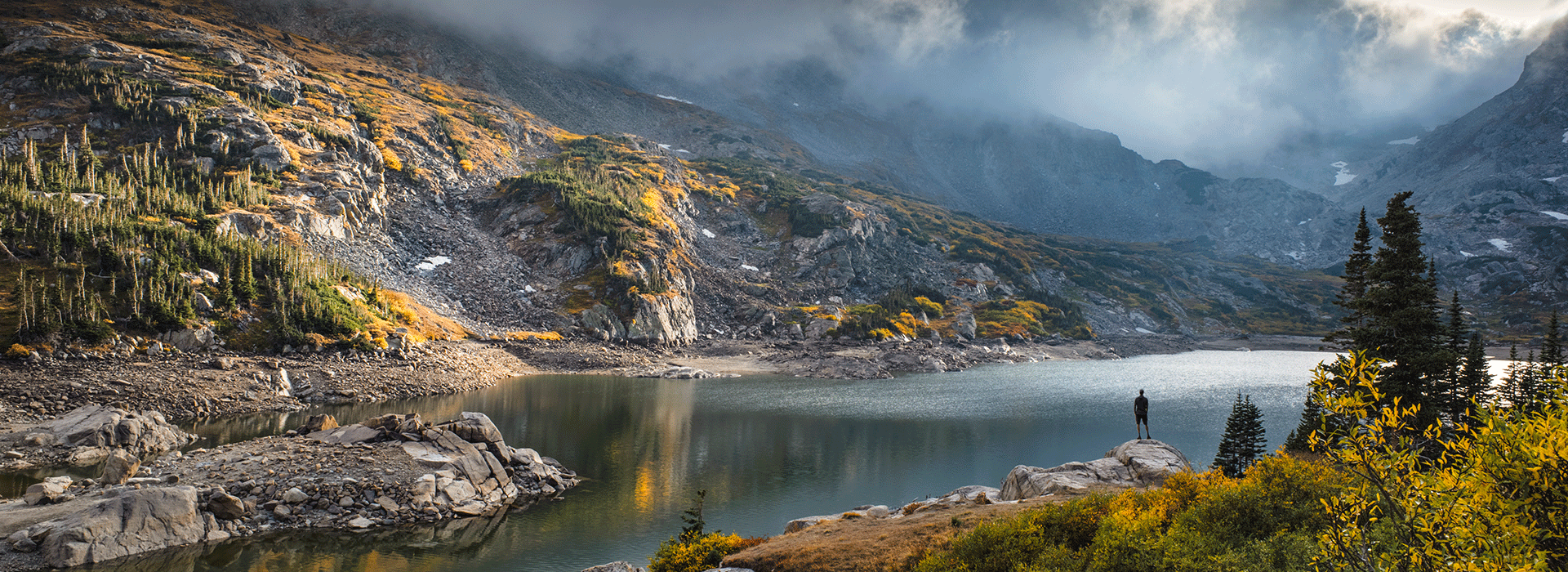Now What?
By Mike Geraci

In the midst of the COVID-19 lockdown in early May, with 10 feet of snow stubbornly frozen to the middle elevations of Wyoming and the annual spring camping trip to the Utah desert on permanent hold, my wife and I planned an excursion to an unmapped trail on the eastern border of Grand Teton National Park for a relatively low-altitude, potentially snow-free day hike. When we mentioned our plan to a friend who works for the park, he cautioned, “Yeah, I don’t know…the grizzlies are out up there.” To which my wife responded, “Whatever.” Her flippant—and uncharacteristic—dismissal of known recent bear activity in the exact spot we were purposely headed was a shocking manifestation of the desperate new world of escape everyone is struggling to navigate. As COVID-19 shut down America’s favorite indoor places to take a break (bars, theaters, coffee shops, work…), throngs of cooped-up masses have headed into previously unexplored territories, specifically that Great American Outdoors thing they’ve heard and seen so much about for so long. It’s beautiful, relaxing, good for you, and coronavirus-free. Perfect!
Or not.
Brand-level marketing creates awareness and affinity when people aren’t actively shopping for your category, product, or service so that when they are actually in need, you are top of mind and differentiated. For decades, the outdoor industry has been promoting more people in the Great Outdoors. Those years of advocacy paid off when COVID-19 hit and Americans went shopping for a new salve for cabin fever. And they went big. This new embrace has turned into the outdoor industry’s version of what the tech industry calls the “Slashdot effect” or a Reddit “Hug of Death,” which, according to Wikipedia, is when “… a popular website links to a smaller website, causing a massive increase in traffic. This overloads the smaller site, causing it to slow down or even temporarily become unavailable.”
Appropriately, in response to our be-careful-what-you-wish-for moment, the outdoor world has taken a page out of tech’s playbook. The Great Outdoors is getting overrun, and our land managers’ strategy is to reboot the system with hopes we’ll be able to handle the traffic when we’re all back online. The National Park Service is in the midst of staged re-openings after totally closing national parks. In Colorado, the City of Boulder closed Boulder Creek and the surrounding park land due to overuse, only to reopen after an uproar. In California, Los Padres National Forest closed some popular trails for two weeks, and San Bernardino National Forest closed Deep Creek for a year in order to get a handle on the crowds. In New York’s Hamptons, locals put up barricades to limit beach parking and used police officers to ticket outsiders. Not to be outdone, Gunnison County, Colorado, sealed off its borders from tourists and nonresident homeowners seeking solace and spring snow, and penalized them with a $5,000 fine or 18 month in jail.
COVID-19 has accelerated emerging trends across society, including overcrowding in sensitive outdoor areas and overtourism in remote destinations. For an industry so focused on getting more people outdoors for so long, which now has now has a tangible view of what success looks like, the question becomes: Now what? We’ve created the demand; now we need to manage the supply. The success or failure of that quest will determine whether this newfound interest is just a flash-in-the-pan trend or the long-term sustainable behavioral shift for which we’ve long advocated. Just like the impacts of spring runoff, for the outdoor industry, COVID-19 will create new channels and paths to explore. And, apparently, there will be bears.
Mike Geraci is the Geraci part of Geraci & Co., a brand strategy and communications group, based in Jackson, Wyoming.